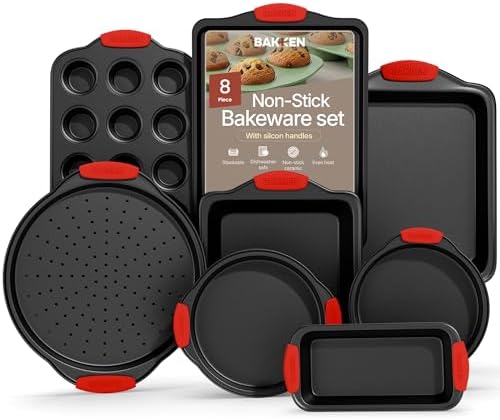Cheesecake on Keto Diet: Savory Solutions for Guilt-Free Enjoyment
This post may contain affiliate links. If you purchase through these links, I may earn a small commission at no extra cost to you. LEARN MORE.
For those on a ketogenic diet, finding delicious desserts can sometimes feel like a daunting task.
Cheesecake stands out as a perfect option because it can easily be adjusted to fit within low-carb guidelines without sacrificing flavor.
Cheesecake on keto diet provides a rich, creamy delight that satisfies your sweet tooth while keeping you aligned with keto goals.
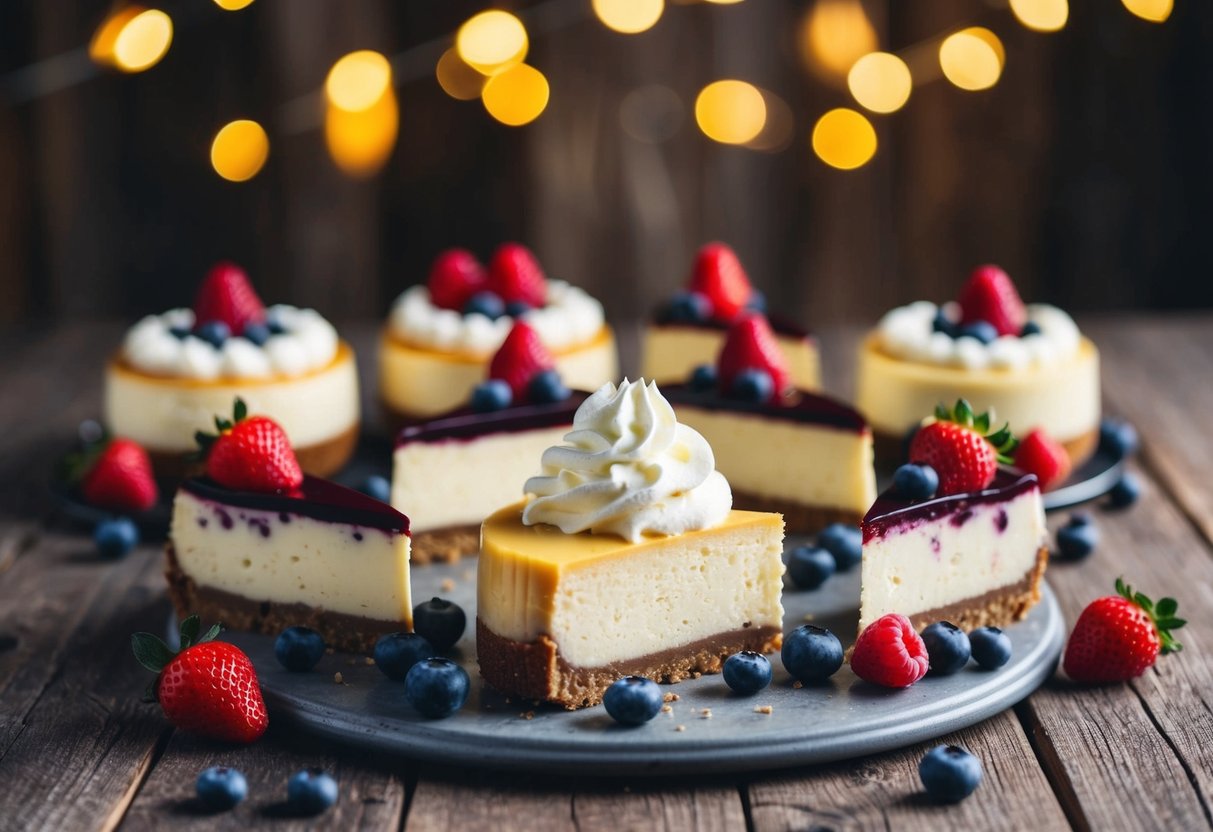
Cheesecakes can be adapted in numerous ways to cater to different tastes and preferences.
From luscious cheesecake cupcakes with almond meal crusts to crustless options that simplify the baking process, there are plenty of recipes to explore.
Each variation offers a unique twist while keeping carbs to a minimum, ensuring that everyone can find a favorite.
The base of a good keto cheesecake is often the key to its success.
Using ingredients like almond flour and sugar substitutes ensures that each bite remains within the carb limits.
With the right techniques and ingredients, it’s easy to achieve a silky consistency that’s reminiscent of traditional cheesecakes.
New to keto desserts? Start with our Understanding Keto Desserts guide for essential tips and some recipes.
Looking for a personalized approach? Check out our Custom Keto Diet for tailored meal plans that include irresistible keto desserts!
Key Takeaways
- Keto cheesecake is low-carb and keto-friendly.
- Cheesecake variants keep enjoying desserts interesting.
- The base is crucial for a successful keto cheesecake.
Understanding Keto Desserts
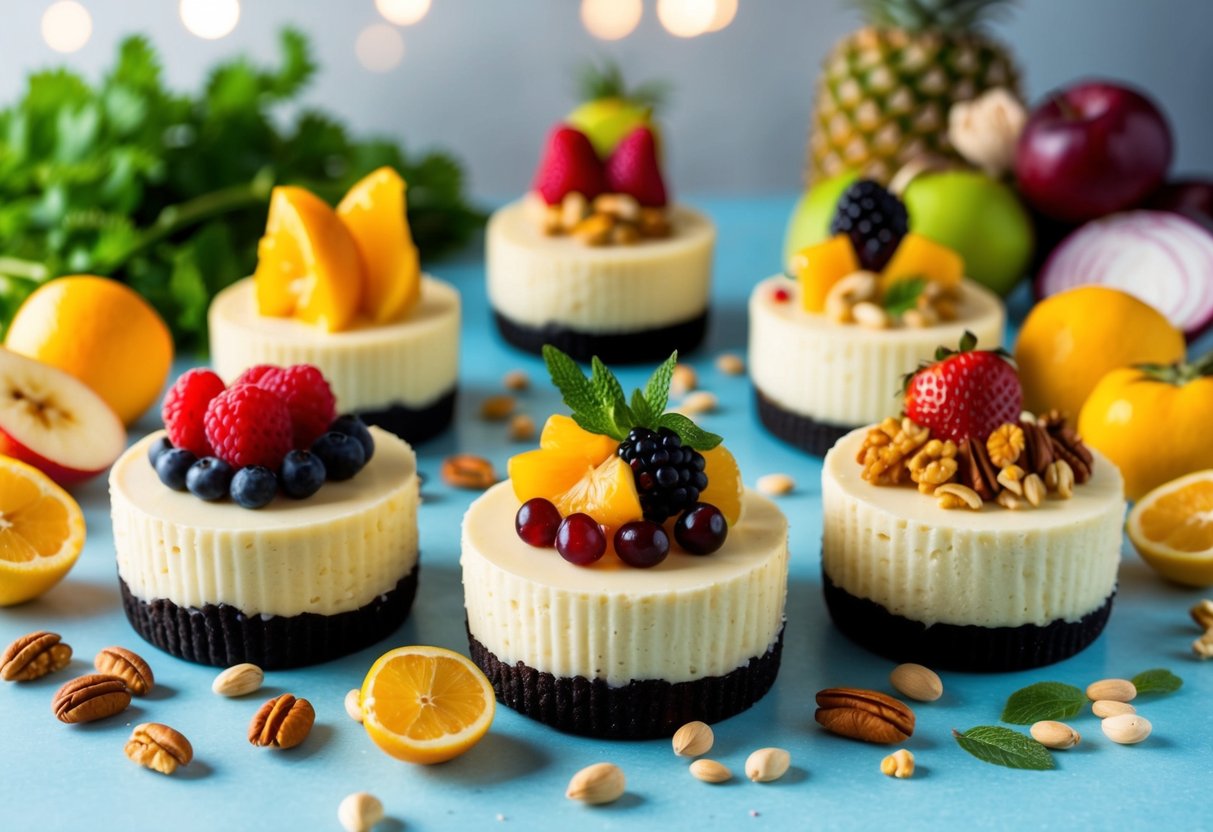
Keto desserts have gained popularity for their low-carb appeal while still offering satisfying flavors.
By focusing on specific ingredients, these treats align with ketogenic principles for a delightful experience.
The Basics of Ketogenic Diet
The ketogenic diet is a high-fat, low-carb eating plan. It encourages the body to enter a state called ketosis.
In ketosis, the body burns fat instead of carbohydrates for energy.
This diet requires a drastic reduction in carbohydrate intake.
Typically, carbs are limited to 20-50 grams per day. Instead, about 70-80% of daily calories come from fats, with the rest split between protein and carbs.
For those following this diet, desserts must be low in carbs.
This often involves substituting sugar with low-carb sweeteners like stevia or erythritol.
Almond flour and coconut flour frequently replace traditional wheat flour in recipes.
New to keto? Read our Keto Diet for Beginners for a solid foundation.
Benefits of a Low-Carb Indulgence
Low-carb desserts offer several benefits to those on a ketogenic diet.
They satisfy sweet cravings while staying within carb limits. This can help maintain ketosis and support weight management goals.
These treats often use healthier fat sources like nuts and avocados.
By incorporating such ingredients, they add nutritional value while promoting satiety.
Additionally, low-carb desserts can help manage blood sugar levels due to reduced sugar content.
Discover more on the benefits of low-carb eating in our Benefits of a Low-Carb Lifestyle article.
The Art of Cheesecake on Keto Diet
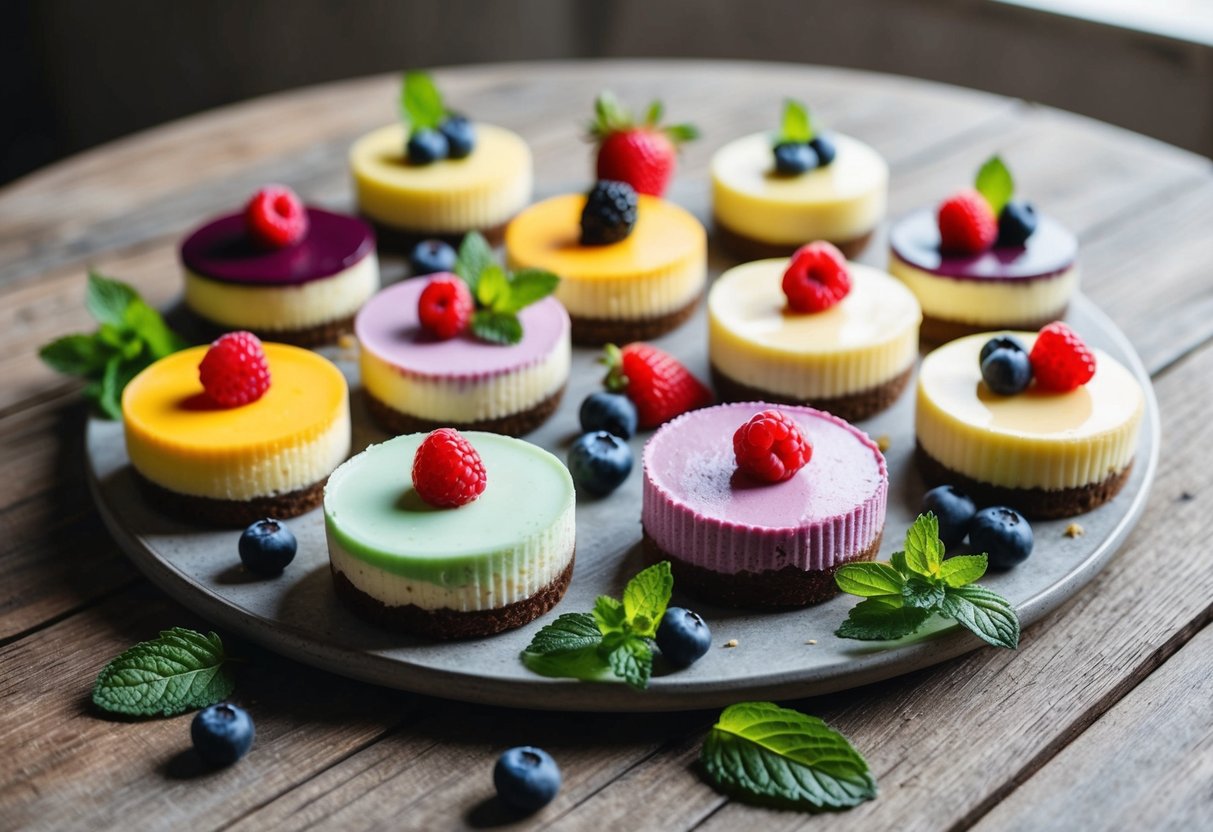
Creating a keto cheesecake is both a science and an art.
Using keto-friendly ingredients ensures the final dessert is low in carbs while maintaining the creamy texture and rich flavor that cheesecakes are known for.
The sweeteners, particularly stevia, play a crucial role in achieving the perfect balance of sweetness without using sugar.
Choosing Keto-Friendly Ingredients
When making a keto cheesecake, selecting the right ingredients is key.
Cream cheese is the foundation, offering the smooth and rich base that contributes to the dessert’s creamy texture.
Opt for full-fat cream cheese, as it provides the necessary consistency and flavor.
The crust can be made using almond flour instead of traditional graham crackers to keep the carb count low.
Almond flour is a popular choice due to its similar texture and mild flavor, which complements the creamy filling.
Butter helps bind the crust together and provides a subtle taste that enhances the overall dessert.
Learn how to pick keto ingredients in our Guide to Keto-Friendly Foods.
Keto Sweeteners: Stevia and Others
Choosing the right sweeteners is crucial in keto desserts.
Stevia is a popular choice for its natural origin and zero-calorie content.
It’s often used in combination with other sweeteners like erythritol to create a balanced sweetness without any aftertaste.
Other keto-approved sweeteners include monk fruit and allulose.
These can be used alone or blended with stevia to closely mimic the sweetness of sugar.
It’s important to adjust the amounts carefully since some sweeteners can be much sweeter than sugar, requiring smaller quantities to achieve the desired sweetness.
Try our recommended keto sweeteners available on Amazon!
Perfecting the Keto Cheesecake Base
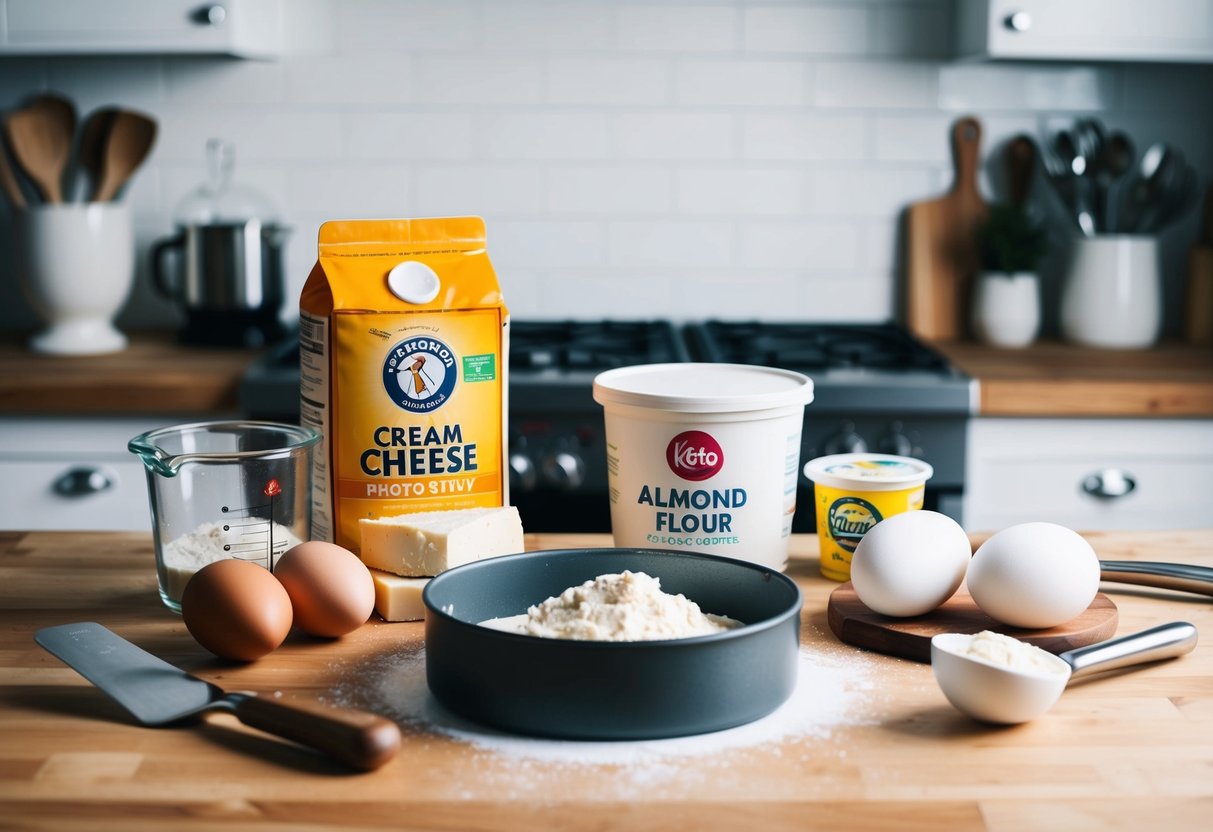
Creating a keto cheesecake base involves choosing between almond flour and coconut flour to achieve the desired texture and taste while keeping it gluten-free and low-carb.
Each option has unique properties that affect the flavor and consistency of the crust.
Almond Flour Crust Basics
Almond flour is a popular choice for a keto cheesecake crust because it mimics the texture of traditional graham cracker crusts.
It is naturally gluten-free and offers a nutty taste that complements the creamy filling.
To make an almond flour crust, mix 1 ½ cups almond flour with ¼ cup melted butter and 2 tablespoons of powdered erythritol.
Press the mixture evenly into the base of a springform pan. Baking the crust for about 10 minutes at 350°F helps achieve a crispy texture.
Benefits: Almond flour adds healthy fats and a subtle flavor.
It is important to use super-fine almond flour for the best results, ensuring no gritty texture.
Coconut Flour Alternatives
Coconut flour is another gluten-free option for those looking for alternatives to almond flour.
It is highly absorbent and has a mild coconut taste.
When using coconut flour, it requires less quantity compared to almond flour.
Start with about ¾ cup of coconut flour mixed with ¼ cup melted butter and 2 tablespoons of erythritol. This mixture can be pressed into the pan to form the crust.
Tip: Because coconut flour absorbs more liquid, you might need to adjust the moisture content, possibly by adding an extra tablespoon of butter.
The coconut flavor is subtle, but pairs well with tropical or fruity toppings.
Need more personalized tips? Our Custom Keto Diet plan is here to help you perfect your keto desserts!
Diverse Keto Cheesecake Variations

Keto cheesecake offers rich and decadent treat options that are low in carbs. These variations allow for exciting choices, from classic flavors to vegan-friendly recipes.
Classic and Decadent Twists
For those who love classic cheesecake, there’s a keto version that still offers a rich and creamy texture.
Ingredients like cream cheese, vanilla extract, and sugar-free sweeteners ensure it tastes authentic, even without sugar.
Almond flour or meal often replaces traditional crust ingredients, keeping the net carbs low.
Decadent twists can include flavors such as chocolate swirls, creating a cheesecake brownie effect.
Adding lemon juice or sour cream enhances the tangy flavor, giving depth without the carbs.
For a luxurious touch, topping with berries or a homemade chocolate drizzle can satisfy sweet cravings.
Explore more decadent keto dessert ideas in our Keto Dessert Recipes collection.
Vegan and Organic Options
Vegan keto cheesecakes provide a plant-based twist while staying low-carb.
These recipes often utilize coconut cream, almond milk, or cashews for a smooth, creamy texture. They swap traditional dairy ingredients with plant-based ones.
Organic flavors can enhance the taste with natural extracts like vanilla or almond.
These methods ensure the cheesecake is not only vegan but also delicious and satisfying.
A sprinkle of organic nuts or seeds can add a contrasting texture, making every bite exciting.
These options cater to those seeking both ethical and dietary preferences without compromising on flavor.
Check out our Vegan Keto Recipes for plant-based meal ideas.
Assembling and Baking Tips
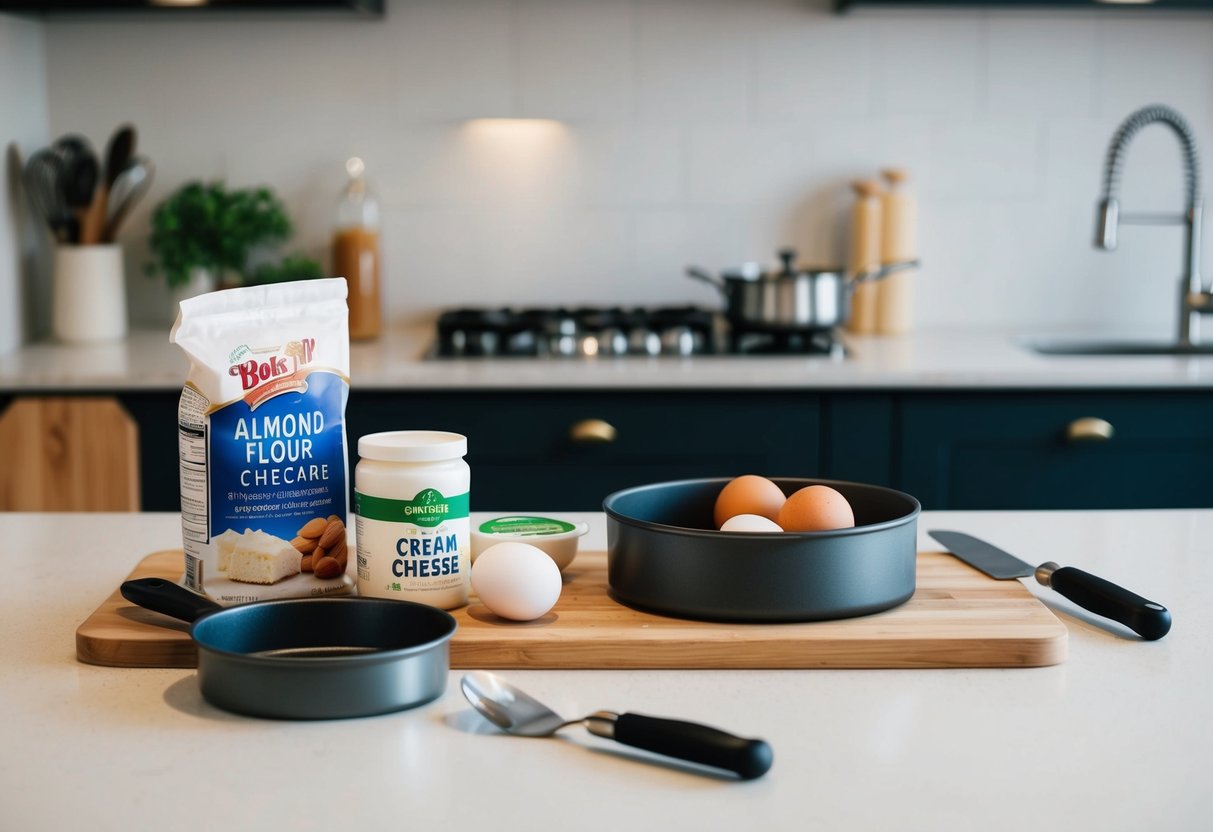
Crafting the perfect low-carb cheesecake requires attention to detail in preparation and baking. Using the right techniques can help achieve a creamy, rich flavor without the excess carbs.
Preparing Your Cheesecake
Start by gathering high-quality ingredients for the best results.
Use cream cheese that is softened to ensure a smooth mixture. Powdered erythritol is a popular sugar substitute to keep the carb count low while maintaining sweetness.
Beat cream cheese until it’s fluffy, then gradually mix in the sweetener and vanilla extract.
Add eggs one at a time, blending gently to avoid incorporating too much air. Over-mixing can lead to cracks.
Sour cream can be added for a creamier texture.
The crust is crucial. Use almond flour or crushed nuts instead of graham crackers to keep it low carb. Press this mixture evenly into the bottom of your pan before adding the filling.
Baking for Optimal Texture
Bake the cheesecake in a preheated oven at a moderate temperature, around 325°F (160°C).
Place the cheesecake pan in a larger pan with an inch of hot water for a water bath. This helps cook the cheesecake evenly, preventing cracks.
Bake until the edges are set but the middle still has a slight jiggle. A toothpick should come out clean when inserted near the center.
Cooling gradually is key; let the cheesecake cool in the oven with the door slightly open.
Once cooled, refrigerate the cheesecake for several hours or overnight.
This allows it to firm up and develop its flavors fully, resulting in a rich and satisfying low-carb dessert.
Fully upgrade your kitchen and ready to bake your favorite cheesecake with these top recommended equipments from Amazon below.
Frequently Asked Questions

Keto cheesecake offers creative ways to enjoy dessert on a low-carb diet. Discover simple recipes with few ingredients, tips for making crustless and sugar-free versions, and how to satisfy a sweet tooth while maintaining ketosis.
What is a simple 3 ingredient recipe for keto cheesecake?
A quick keto cheesecake can be made with cream cheese, eggs, and a sweetener. Mixing these ingredients and baking for a few minutes results in a creamy treat. Use a sugar substitute like erythritol to keep it low-carb.
How can I make a crustless cheesecake that is keto-friendly?
To create a crustless keto cheesecake, mix softened cream cheese, eggs, vanilla extract, and a keto-friendly sweetener. Pour the mixture into a baking dish and bake until set. This method reduces carbs without sacrificing taste.
What is the best way to create a low-carb cheesecake crust using almond flour?
Mix almond flour with melted butter and a keto-friendly sweetener to form a dough. Press this mixture into a pan and bake until lightly golden. This almond crust is flavorful and complements the creamy filling.
Can you recommend a sugar-free cheesecake recipe suitable for diabetics?
For a diabetic-friendly, sugar-free cheesecake, use cream cheese, eggs, vanilla extract, and a zero-calorie sweetener like stevia. This combination provides sweetness without affecting blood sugar levels.
What are some delicious ways to satisfy a sweet tooth on a ketogenic diet?
Enjoy berries with whipped cream, chocolate avocado pudding, or coconut fat bombs. These options provide sweetness and can help maintain ketosis.
They are quick to prepare and satisfy dessert cravings.
How do I prepare a keto cheesecake base without compromising on flavor?
Combine almond flour with a pinch of salt, melted butter, and a sugar substitute.
Press into a pan and lightly bake it. This mixture offers a tasty, buttery base that enhances the cheesecake’s overall taste.
Conclusion
Following a keto diet doesn’t mean giving up on enjoying cheesecake. There are many delicious options available that fit into a low-carb lifestyle.
Keto cheesecakes can be both rich and satisfying without the extra carbs.
Options like sugar-free, gluten-free, and flourless cheesecakes offer tasty alternatives that still capture the essence of a traditional cheesecake.
Even for those new to the kitchen, some recipes are easy and quick to prepare. These recipes allow people to enjoy a sweet treat while staying on track with their diet goals.
By selecting the right ingredients and paying attention to portion sizes, indulging in a keto cheesecake can be part of a balanced approach to a low-carb diet.
Plan your next dessert with our 7-Day Custom Keto Diet Meal Plan for Beginners.
Ready to indulge without compromise? Start your Custom Keto Diet journey today and enjoy delicious, low-carb cheesecake delights!






